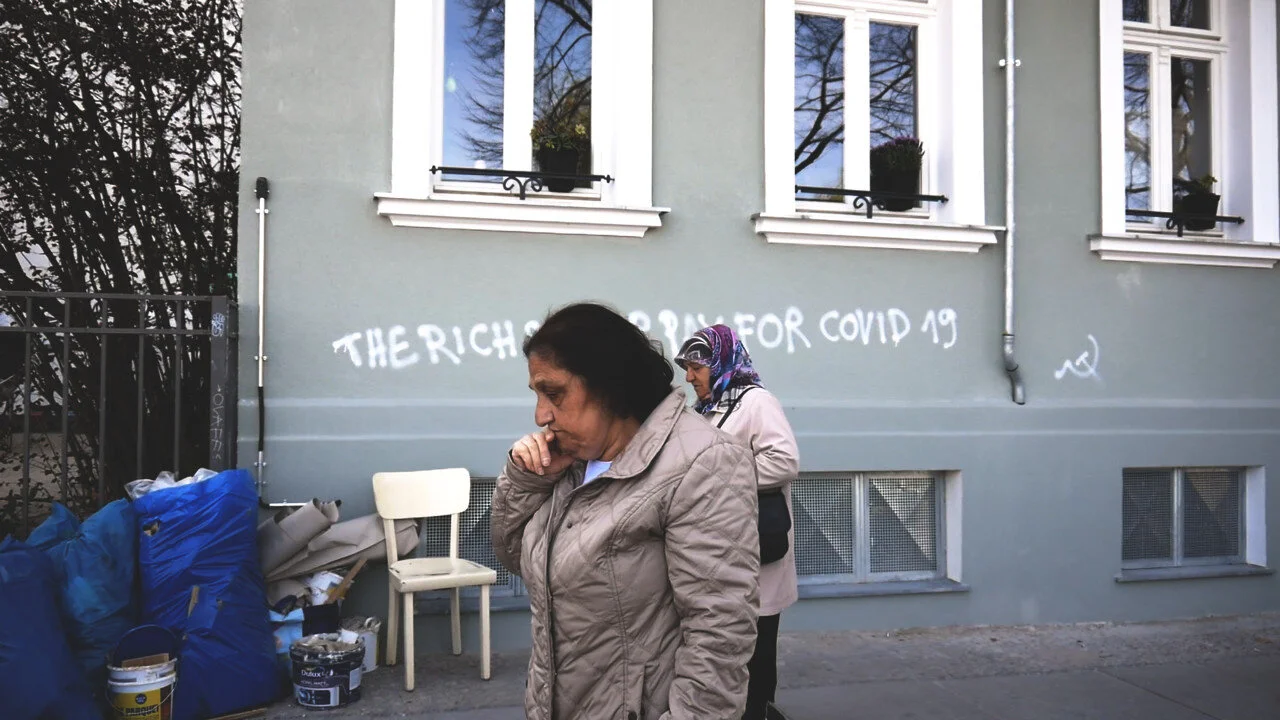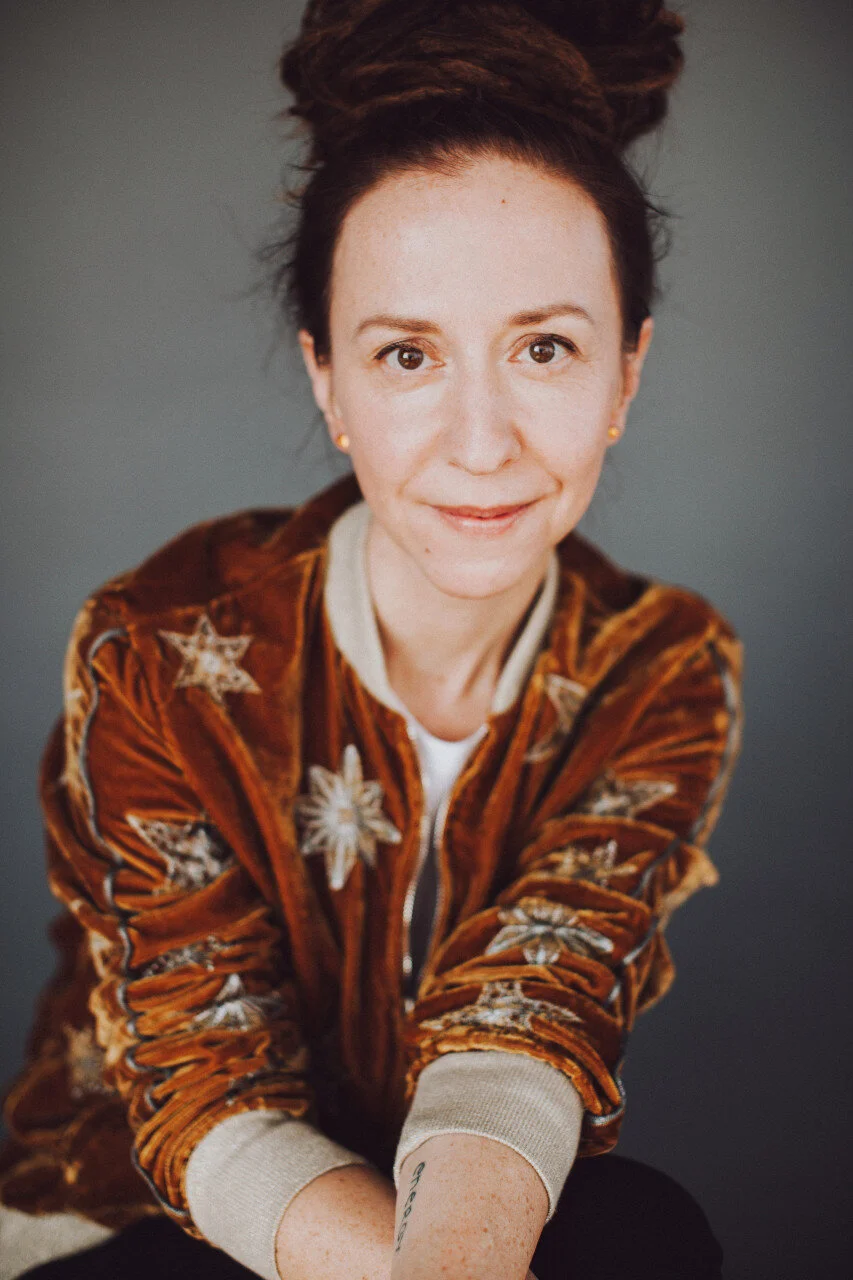Original-Cin Q&A: Ingrid Veninger on Creating the Ultimate Female Pandemic Collaboration
By Liam Lacey
A little more than a year ago on March 20, as the COVID-19 shutdown began, Porcupine Lake director Ingrid Veninger realized she had to scrap plans for her eighth feature film, scheduled to begin shooting last May.
A scene from Time/Gap
It did not take long for the famously resourceful pUNK Films multi-threat filmmaker to change course. That day, Veninger began sending out emails with a project idea to dozens of women filmmakers in Canada and around the world who she knew and admired.
Ingrid Veninger
“The project was absolutely linked to the female gaze and women filmmakers,” she says. “And I think that was very much informed by the fact that I was writing the screenplay intended to shoot in May of 2020 in the UK about four generations of women. And that project completely dissolved. It was like, ‘I can't make this project by myself so all I want to do is collaborate with women right now, in this time.’
“Half the women are Canadian, half from other countries around the world. And everyone who agreed was basically saying, yes. Yes, to uncertainty and just trusting each other and knowing it was not going to dissolve.”
To make sure there were no roadblocks, Veninger picked up the cost herself, though she was eventually aided by a grant from York University where she teaches, which allowed her to pay each filmmaker an honorarium. If the filmmakers committed, Veninger’s film would happen and they would have artistic freedom.
“I would guarantee the film would be finished. And I wasn’t going to work, orchestrate, shape or inform the creative work in any way. But I was absolutely assuring every participant that this project will not fail, and we won’t wait for funding or permission and we will absolutely finish it. And at the end, hopefully, it will be something we will all like and be proud of.”
After sending out requests to about 50 different filmmakers, by March 30, she had assembled the team. The result is One (Nine), which gets its world premiere this weekend at the Female Eye Film Festival, where it is available for free this weekend, via digital TIFF Bell Lightbox and the Encore+ YouTube channel.
(Originally, there were 10 filmmakers, though Violeta Ayala of Bolivia had to drop out to make her virtual reality film, Prison X, which premiered at January’s Sundance Film Festival.)
The schedule was severe. By the end of May, they each submitted a rough cut, with a fine cut by the end of June. The film was locked in September, with post-production work carried on remotely through the fall.
One (Nine) also follows an historic model of collaboration, the logic-scrambling “exquisite corpse” game employed by Surrealist artists, where each contributor in a group works separately, adding a portion to a composition (music, image or writing), either by following a rule, or inspired by the end of the previous contribution.
“I’ve always wanted to make an exquisite corpse-type film,” says Veninger. “I fluctuate in the space between the DIY kind of authored ownership of making something that I can control and a truly collective creation, where there is surrender to the group, the process being more important than the result or, ultimately, any singular vision.
PROUDLY SUPPORTS ORIGINAL-CIN
“When I started approaching the filmmakers, the idea was always to create a framework for a feature. But none of us would know what the other was doing and ultimately, it would come together in some abstract whole. And everyone was, ‘OK, that’s great.’
“The first thing we started talking about was transitions; how we move from one piece to the next, and we had a whole bunch of ideas that we tabled: a sky shot or a shot of an object or a portal or intertitles, or chapters. But we said, ‘None of that. ‘We don’t even want to think of how these will be sequenced. We don’t want transitions in any conventional way.’”
The final film includes five 10-minute films from Canada — Mina Shum’s Touch, Isa Benn’s Heal/Rage, Jennifer Podemski’s Spirit, Slater Jewell-Kemker’s Soar, and Veninger’s Birth.
The other films come from Spain’s Lydia Zimmerman (Encounter), South Africa’s Carmen Sangion (Uncertainty), China’s Shengze Zhu’s (Together), and Germany’s Dorothee Wenner (Time/Gap).
The nine entries include dramas, diary films, docufiction, animation, found footage, poetry, and dance. While they are too varied to summarize, they collectively capture the mood of those first anxious weeks of life under the new abnormal when, as the narrator/filmmaker Isa Benn’s says, you either get more spiritual or more crazy.
What’s most rewarding is the way the individual films speak to each other. Naturally, there are a lot of interiors and shots through windows, phone calls, images of the sky and walks in nature. Less obviously, animals — cats, dogs, birds, insects, reptiles — are everywhere as various kinds of spirit guides.
In one film, the narrator compares humans unfavourably to the “nobility” of ants. In another, a harried caregiver transforms into a crow. In Lydia Zimmerman’s Encounter, the last film in the sequence, the last word is given to white horse, who suggests a grounded Pegasus. Tied to a tree, the horse paws the ground and exhales, in a whoosh of exasperation that speaks to the moment.
Although Veninger kept her hands off the product, her guiding spirit set the rules for One (Nine) and the importance of capturing the moment, using only accessible cameras or phones, guided by such adjectives as “personal,” “urgent,” “raw,” “honest,” “brave,” and “immediate.”
“I think it was my curiosity,” Veninger says. “What would all of us making something at the same time, while we all felt completely uncertain and full of fear, manifest? What would it look like? What would be the perspective of women filmmakers from different parts of the world at different stages in their careers during this time?”
In the end, she chose not to pick the order of the nine films, leaving that to supervising editor Rick Bartram, who sent his preferred sequence to all the filmmakers for their approval.
As well as the theatrical film, Veninger and her team have created an interactive “choose-your-own-adventure” web version, where viewers can assemble the films in different arrangements… to while away the quarantine hours.
One (Nine) can be seen as part of the Female Eye Film Festival via digital TIFF Bell Lightbox or on the Encore+ YouTube channel.




